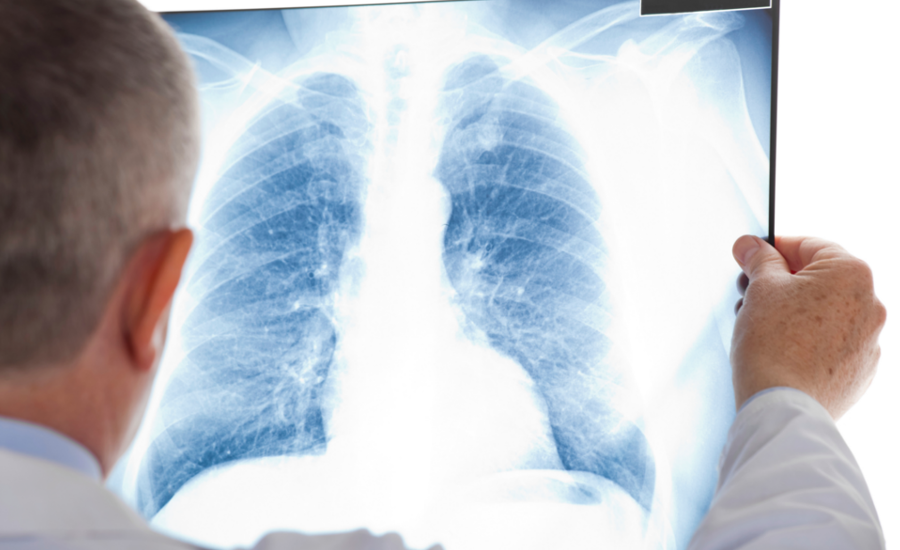A NIOSH Science Blog post
Outbreak of silicosis in artificial stone countertop affects workers in four states

Credit: Getty Images
Artificial stone countertops, also known as "quartz stone countertops," are made by polymerizing quartz aggregate and resin binder. These materials look similar to natural stone and are increasingly used in residential construction and home furnishings. Between 2010 and 2018, imports of quartzite countertops in the United States have increased by nearly 800% (US International Trade Commission). Artificial stone may contain much more crystalline silicon than natural stone (> 90% and granite <45%) (Occupational Safety and Health Administration [OSHA] / National Institute of Occupational Safety and Health [NIOSH] Hazard Alert ). Operations such as cutting, sanding, polishing, and drilling have the potential to diffuse dangerous levels of silicon dust into the air. Inhalation of dust from materials containing silicon (such as artificial stones) can cause silicosis. Silicosis is caused by scars in the lungs and can cause permanent lung damage. It is a progressive, incurable, incurable, and even fatal disease.
Exposure to silica dust poses a health hazard to workers who manufacture, process, and install natural stone countertops and artificial stone countertops. The symptoms of silicosis can include cough, fatigue, shortness of breath, or chest pain. Silicosis usually occurs after exposure to inhalable crystalline silica dust for 10 years or more. However, intensive exposure can cause the disease to progress more quickly and can lead to more severe lung disease. In addition to silicosis, inhalation of small amounts ("respirable") crystalline silicon particles can cause lung cancer, chronic obstructive pulmonary disease (COPD) and kidney disease, and can be accompanied by lung infections, autoimmune diseases and cardiovascular damage.
A case of silicosis associated with artificial stone processing has been previously reported in Texas, USA (Friedman, 2015). Recently, 18 cases of silicosis have been detected in stone processing workers in California, Colorado, Washington, and Texas (Rose and Heinzerling, 2019). Most of these workers are engaged in artificial stone materials, and most are under 50 years of age. Outbreaks of silicosis have also been reported in artificial stone workers in Israel, Spain and Australia (Kramer, 2012; Perez-Alonso, 2014; Hoy, 2018; Leso, 2019). Queensland, Australia, provided medical screening for all at-risk stone processing workers and found that 12% of workers had silicosis (Kirby, 2019). In 2018, nearly 9,000 companies and 96,000 employees in the U.S. were engaged in the stone processing industry (US Bureau of Labor Statistics quarterly employment and wage census). Since many of these employees have probably not undergone medical examinations, it is likely that other cases of silicosis remain undetected in the United States.
Employers must protect workers from direct contact with crystalline silica dust. The Federal Occupational Safety and Health Administration (OSHA) has issued two standards for respirable crystalline silica dustTo protect workers. Construction standards (29 CFR 1926.1153) and general industrial and maritime operating standards (29 CFR 1910.1053) came into effect on June 23, 2016. Over the past few years, similar standards have also been implemented in state OSHA jurisdictions. Employers must follow applicable federal standards or statesOSHA standards to ensure that employees are exposed to a minimum of 50 micrograms (50 µg / m3) of exposure limit (PEL) per cubic meter of air for respirable crystalline silica during an average of 8 hours of work. For more information on finalized silicon dust regulations, employer requirements, and specific dates for federal OSHA implementation, see here.
Preventing silicosis can be achieved through effective process control measures and operating practices to reduce respirable silica dust exposure. Process control measures, such as wet work methods and ventilation, should be used to control exposure to silicon dust. Standardized job control measures (including appropriate cleaning procedures) can be used in conjunction with process control measures to protect employees. When the silicon dust content reaches a hazardous level, and under the requirements of silicon dust related regulations, employees should be provided with NIOSH approved respiratory protective equipment. Respiratory protection is the least effective control measure.
According to OSHA Silicon Dust regulations, licensed health care providers must provide inspections to artificial stone countertop workers exposed to hazardous levels of silicon dust. This test must include a respiratory function questionnaire, physical examination, X-ray chest examination ( interpreted by a NIOSH-certified Class B reader ), and a spirometry. If a health care provider suspects that a patient's health is caused by a job involving quartz-containing materials, it should report the case to the local or state health department. In addition, doctors can direct questions to silicosisreporting@cdc.gov if they have questions about silicosis reporting. In 2017, silicosis was found in 22 statesIs a condition that must be reported (contact information for the State Department of Occupational Safety and Health can be found here ).
Posted in California, WashingtonAnd TexasThe Hazard Alert provides information on silica dust exposure, silica dust control requirements, and resources for workers exposed to silica dust. See here for a webinar that describes the dangers of silica dust exposure, compliance with OSHA requirements for inhalable crystalline silica dust, and employers' methods to protect employees.
The NIOSH Health Hazard Assessment (HHE) program provides employees, employee representatives, and employers with free assistance and information about silicon dust exposure in the workplace and employee health. For more information on the NIOSH HHE program, see the NIOSH HHE feature page . If you are interested in working with NIOSH, employees, union officials or employers can apply here to assess the possible health hazards in their workplace.
This blog highlights situations where workers are exposed to high levels of silica dust over time. We are unable to provide individuals with specific medical advice, and we do not comment on the potential exposure of the public / consumer / homeowner. If you are concerned about your health, please contact your doctor.
The authors would like to thank Ketki Patel, senior epidemiologist and MD, of the Texas Department of Health Services.
Click here to visit this post on the NIOSH website and leave a comment.
References
Friedman GK, Harrison R, Bojes H, Worthington K, Filios M. Notes from the field: silicosis in a countertop fabricator — Texas, 2014. MMWR Morb Mortal Wkly Rep. 2015 Feb 13; 64 (5): 129-30.
Hoy RF, Baird T, Hammerschlag G, Hart D, Johnson AR, King P, Putt M, Yates DH. Artificial stone-associated silicosis: a rapidl.y emerging occupational lung disease. Occup Environ Med. 2018 Jan; 75 (1) : 3-5.
Kirby T. Australia reports on audit of silicosis for stonecutters. Lancet. 2019 Mar 2; 393 (10174): 861.
Kramer MR, Blanc PD, Fireman E, Amital A, Guber A, Rhahman NA, Shitrit D. Artificial stone silicosis: disease resurgence among artificial stone workers. Chest. 2012 Aug; 142 (2): 419-24.
Leso V, Fontana L, Romano R, Gervetti P, Iavicoli I. Artificial stone associated silicosis: a systematic review. Int J Environ Res Public Health. 2019 Feb; 16 (4): E568.
Perez-Alonso A, Cordoba-Dona JA, Millares-Lorenzo JL, Figueroa-Murillo E, Garcia-Vadillo C, Romero-Morillo J. Outbreak of silicosis in Spanish quartz conglomerate workers. Int J Occup Environ Health. 2014 Mar; 20 (20 1): 26-32.
Rose C, Heinzerling A, Patel K, Sack C, Wolff J, Zell-Baran L, Weissman D, Hall E, Sooriash R, McCarthy RB, Bojes H, Korotzer B, Flattery J, Weinberg J, Potocko J, Jones KD, Reeb-Whitaker CK, Reul NK, LaSee CR, Materna BL, Raghu G, Harrison R. Severe Silicosis in Engineered Stone Fabrication Workers — California, Colorado, Washington, and Texas, 2017–2019. MMWR Morb Mortal Wkly Report. September 27, 2019/68 (38); 813--818.
US Occupational Safety and Health Administration; National Institute of Occupational Safety and Health, CDC. Hazard alert: worker exposure to silica during countertop manufacturing, finishing, and installation. 2015. Available from: https://www.osha.gov/Publications/ OSHA3768.pdf.
United States International Trade Commission for Harmonized Tariff Schedule (HTS) code 6810.99.0010, Agglomerated quartz slabs of the type used for countertops. Available from: https://dataweb.usitc.gov
Looking for a reprint of this article?
From high-res PDFs to custom plaques, order your copy today!





